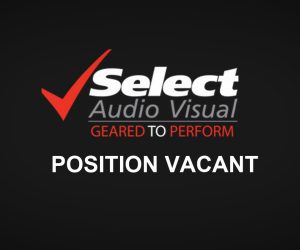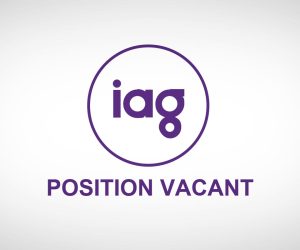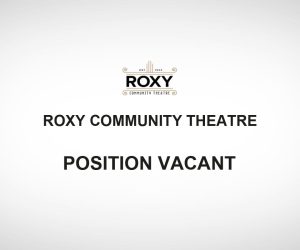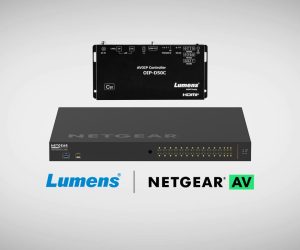
Opera House Curtain Call
David Claringbold has been instrumental in the rise and rise of the Sydney Opera House as a technical and cultural icon as much as it is a architectural one. Here he recalls some highlights of two decades in The House.
Text:/ David Claringbold
The Sydney Opera House has an enviable reputation for excellence in the performing arts. World-class facilities, highly skilled technical staff, and a willingness to test the limits in pursuit of being leaders rather than followers. What’s easy to forget is that not so long ago, the Opera House was a place no one wanted to perform at; full of staff who’d rather be somewhere else, working with outdated or unsuitable gear. Turning around the fortunes of The House required a huge culture shift and some big-time capital expenditure — a team effort in other words. But undoubtedly there’s one man who must take the most credit for the Opera House’s well-earned and hard-won reputation and that’s David Claringbold.
David Claringbold has recently announced his resignation after spending some 20 years working at the Sydney Opera House, most recently as Director of Theatre & Events, responsible for over 500 staff, a significant amount of the programmed content, tens of millions of dollars in business and just about everything that moves on Bennelong Point.
Typical of his tenure at the Opera House his resignation comes with little fanfare and certainly no bad blood. “Now’s a good time to move on and to really think differently about the future. Not that I’m bored or unhappy where I am but there’s a time when you have to acknowledge you’ve put together the thing you wanted to put together and you have a great team that functions at a high level, built on an incredible technology base.”
His story is the story of the Opera House’s rise from technical basketcase to world leader. This issue we’ve paid David the courtesy of allowing him to tell his story entirely in his own words.
1990: THE WAY BACK MACHINE
David Claringbold: I first came to the Opera House in 1990 as a Casual Sound Desk Operator Grade 3. I’d come from a club and pub live sound background as well as working in the better recording studios around town, producing artists I’d got to know by doing live gigs.
Sounds terrible to say, but when I was first working there, I didn’t really give a shit. The reason? No one else did. I was shocked to see how bad things were technically from a sound perspective. At that point it was all about the lighting and staging and the Opera House was focussed on the classical art form. The sound department had a bit of gear but certainly no systems.
When I left in 1993 I swore I’d never return. But I did. In 1996 I took on the role of Concert Hall Audio Supervisor. I recall that as I was taking part in meetings and conversations at that time, I had a choice to make: either I was a part of the problem or I was going to be part of the solution.
AND THE WINNER IS… SYDNEY
The turning point was around the time the announcement came that Sydney won the Olympics and a new chief executive was installed, Michael Lynch.
I built a good working relationship with Michael so when he shared his vision for the Opera House as being a creative organisation, I was able to be blunt with him: “You’d better think again.” When he asked why, I told him that there were no systems; no capabilities from a technical or human standpoint to deliver on that sort of artistic vision. I’ll never forget his response: “Well I know we spent enough money on the f**king concrete. What do we need to do?” That was the start of a new beginning.
I bought eight Meyer MSL4s, a couple of subs and a multicore. It doesn’t sound like much but Michael Lynch was showing some faith in me. We chose the Meyer PA because they were self-powered as well as industry standard. One of the earliest gigs we did in the forecourt was Buena Vista Social Club. And it energised the crew and the sound department; it showed we were capable of staging events and opening the Opera House to a new audience.
FIXING THE CONCERT HALL
There have been many big technical investments over the years, but one of the highest profile was the upgrade of the concert hall in 2009.
When I took on the position of Technical Director in 2006, getting the concert hall ‘fixed’ was a high priority. It was beyond belief that we were reinventing the wheel in that venue every day — pulling down complex lighting and audio rigs all the time. It was crazy.
I remember sitting in a meeting with a previous technical director and saying: we need a proper sound system in the concert hall, we need to carpet the hall and we need to put up acoustic drapes because it’s damaging the presentation of the venue. He just thumped the table and shouted, “No one’s going to pay for that!”. Which was just blinkered thinking because the Opera House brand was already paying — no one wanted to play there; no one wanted to go there.
Our artistic vision was to present the best artists in the world in the best venue in the world. And the technical department had a part to play in that. Choosing a new PA for the concert hall meant undergoing an intensive period of evaluation.
Shootouts are intriguing scenarios. It was really important we showed every supplier the goodwill of inviting them in or at least giving them the opportunity to compete — to come in and have their day. We engaged Bruce Jackson as an independent ‘arbiter’ as well, knowing how sensitive the process would be.
There had to be a winner and that was d&b with J series main hangs, along with its Q and T series covering the rest of the hall. And that was a big part of d&b’s success: back when I first heard d&b, prior to it taking off in Australia, it was a real eye-opener. The sonic signature was just so consistent across the range, and that’s what impressed me most. Then in the shootouts, the way that system rigged and the measurements we got from it, well, it made us think, “This is something special”.
Did we put some noses out of joint? Of course, but I’ve got to think about the venue and what’s best for it at that time, and think about how the system dovetails with what we’re trying to achieve and the artistic aims of the Opera House. In fact, I’ve been really determined we don’t appear to be a closed shop to any one brand or any one integrator.
Obviously there will be people over the years who will bitch about the decisions we’ve made, but it’s always been about making the right decision for the venue and the crew who are using the equipment.
FIXING THE CULTURE
When I returned to the Sydney Opera House as Technical Director in 2006, I shared senior management’s ambitions for the Opera House brand: ie. to be something contemporary, accessible and something that provided program for all types of people. But our own culture was holding us back from delivering that.
The Studio when it opened was the first venue we could truly call our own — we could invite artists and ask them what they would like to do. Trouble was, the culture at the time was almost militaristic. It was all about getting those lighting plots, rigging plots, and sound plots and delivering those plots to the letter. The new world was about an artist turning up, creating new work in the venue and our technical crew adapting and responding. It was going to require a huge cultural shift.
There were some quite fierce standoffs in that period. I needed the staff to know that I was in charge and I needed the customer to know that I was there for them; that we were there for them. The Sydney Opera House had just become so insular that it was all about our work conditions and it was all about our penalty rates or whatever it was — all important parts of how a venue works but you don’t rub it in a client’s face.
It brought home the fact that, technically, we were a bit behind but culturally we were a long way behind. I knew then, that to get the funding to deliver the vision I had for The House, I would first need to address the human element of the equation.
JUST DELIVER THE GIGS
One of the most significant changes was moving all the supervisors off a rostered, hourly wage regime, and putting them on a fixed annual salary. The message was clear: just deliver the gigs. There’s a lot of trust in that and it took them a while to get it: ‘we trust you and we want you to deliver the services as best you can’.
We also introduced new contractual arrangements that fitted in with the seasonal ebb and flow of the activity of the Opera House. We allowed casuals sick leave, recreational leave… I fought hard for those things, but without an understanding of what the crew needs in their lives how can you get anywhere? You can’t. Yes, I did go quite hard at management but I knew the staff on the floor were looking for leadership and I was there to give it to them.
The result was a better culture and better people. After all, if we didn’t have the right people with the right attitude, with the right skills, in the right structure, any new technology would be redundant. If we didn’t have technology that aligned with the corporate strategy of the business; the technology would be redundant. Those things are inextricably linked.
“”
there will be people over the years who will bitch about the decisions we’ve made, but it’s always been about making the right decision for the venue and the crew who are using the equipment
GETTING TECH ON THE TABLE
To put technology investment on the table as a priority in an organisation, any organisation, you first must understand the brand values of that organisation. Get hold of the strategic plan. Download the corporate or department business plan and use their words ‘against them’. “If our brand values are XYZ then our substandard sound or lighting or staging is not living up to the brand values of the organisation, and we will not deliver on the strategic plan.” You need to look higher, from a strategic perspective, than ‘please may I have a new toy’.
At times I’ve even said, “no, we don’t need the money for that gear right now, please buy the new carpet”, for example. Showing you’re part of the team and that you can see what’s right for the business as a whole at that time, will count in your favour.
Put together a three- to five-year plan. Show that you’ve thought about the future not just from a procurement perspective but from a maintenance, skills and training perspective.
Other times you just have to be plane sneaky.
I recall, around the turn of the millennium, that we would inevitably need to retire our TAC SR-9000 analogue consoles and move to digital. This was around the time Yamaha had launched the PM1D and Euphonix was launching the System 5. In anticipation, I knew we needed to run fibre throughout the venue. It would be an 18-month job. I snuck it past the bean counters by calling it ‘multicore’ in the budget — I didn’t actually mention the word ‘fibre’ for fear of the IT department having a meltdown. When questions were asked… “Oh yeah, that’s the multicore.” So it was kinda done by deception at first, which is funny given the way we now integrate with IT from a network design philosophy — it’s like night and day.
DANTE ENTERPRISE
Mentioning the IT department, I recall using Dante for the first time for the world premier of the reboot of Star Trek in the concert hall. That was pretty out there — I’m not sure we were quite ready for that. We were using Dante to come from the projectors at the back of the hall to the Dolby Lake processors which would then feed the d&b amplifiers.
Intriguingly, it was first time we’d ever got the sound guys and the IT guys in the same room at the same time talking to each other about the way things needed to function. ‘I didn’t know you guys needed to do that,’ and vice versa. After some groundwork we had network switches set up the right way and the data packets flowing correctly.
The cast were in the ante room about to be presented to the premier audience —Paramount Pictures had flown everyone out to the Opera House for the occasion. At that moment someone from back of stage approached me with the news: “we’ve lost half of the PA”. It felt like the blood had drained from of my body.
I went back stage convinced it was the new audio-over-IP system, Dante, at fault. Back stage, rather than being met by a familiar audio department face, I was confronted by an IT guy with a laptop. Being IT, he was about to power cycle the whole system, which would have been a disaster. Thankfully Jeremy Christian, who’s now the Head of Sound at the Opera House, appeared at that very moment and said “Don’t touch a thing!”. In two minutes we ascertained it was actually a power distribution board that had gone down. A quick reboot and we were back.
PICKING PARTNERS
I’ve never been so close to heart failure in my life. I was convinced it must have been the leading-edge tech that was the problem. No, the old tech was.
So the question is: how do you take these technical leaps of faith? You take them with good partners and not with people without a track record.
Stagetec is a good example. It’s a company that’s done a lot of work with us on the new stage management systems and have an incredible track record for design and engineering and integration. We pushed them around the innovation we required for that project. They didn’t quite have all the things that we wanted but after discussions with their R&D we knew we were with good partners.
I think that’s the key, dealing with the right people long term, even if it took us just a bit longer to bring the product to commissioning stage. That investment in them was well worth it. I’m glad we just didn’t go with an off-the-peg solution that was ‘near enough’. Sometimes you have to take a future view.
PART OF SOMETHING BIGGER
The Sydney Opera House is now known as a place of technical excellence. A far cry from when I first darkened the doors in the early ’90s. To achieve that, you’ve got to start at the top. Everyone in the business has got to be living those values.
People who work in technical roles in the entertainment industries are all highly self-motivated, but you need to connect them into something bigger than “we’re going to do the gig right”. After all, you’re sometimes asking them to work extraordinary hours, hours that make no sense when you draft it out in preparation. You really want to plug into the motivation and the passion people have when they get into this business in the first place.
For me, it was about instilling the notion that “we’re part of something bigger”. That we were bringing new audiences and new artists to the Opera House, that we were changing perceptions, and how everyone in the technical teams were crucial in delivering that.














RESPONSES